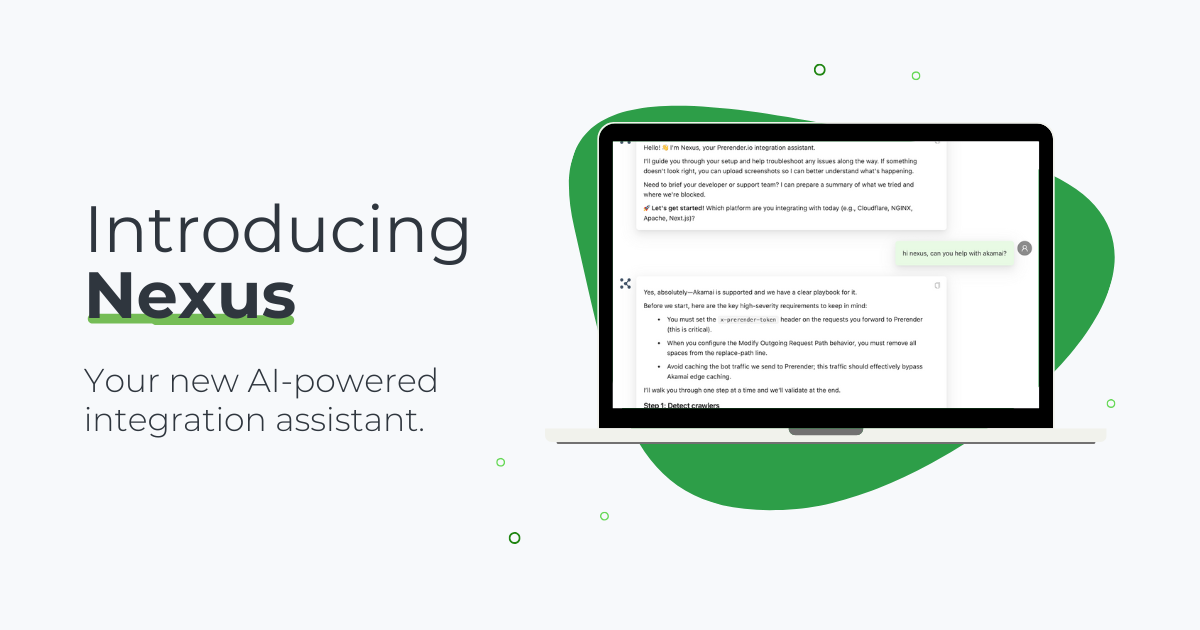From the glistening lights of Black Friday to the hunt for the perfect Mother’s Day gift, specific times of the year ignite a surge in consumer spending. For ecommerce businesses, capitalizing on these sales trends is crucial, but to do that, you have to ensure your dynamic, seasonal content gets indexed by search engines before the shopping frenzy ends.
The key to effective seasonal SEO is preparation and agility. In this ecommerce JavaScript indexing guide, we’ll show you how to prepare your JS product pages to get indexed quickly for seasonal ecommerce sales and share a secret weapon that guarantees your seasonal content will be indexed in days rather than months.
Understanding the Ecommerce Seasonality SEO Challenges
Seasonal SEO is about optimizing your ecommerce site for specific times of the year when consumer spending spikes. It involves aligning website content, keywords, and marketing efforts with specific seasons, holidays, or events to boost visibility and product sales.
While the prospect of increased revenue during these times is enticing, the reality is often more complex. Intense competition for relevant keywords, the first mover advantage, and the need to balance short-term gains with long-term SEO health present substantial challenges for ecommerce retailers seeking to master seasonal SEO. Let’s take a look at some of these issues in detail:
- First-Mover Advantage
With seasonal events, time is of the essence. The earlier your seasonal content gets indexed, the sooner it captures organic traffic. You can think of seasonal trends like a wave; the first movers who publish and get indexed early catch the wave at its peak, riding the initial surge of traffic. Latecomers might still catch the wave, but they’ll miss out on the best part.
- Fierce Keyword Competition
During peak seasons, the competition for keywords intensifies dramatically. Many businesses target the exact high-volume keywords associated with holidays, gift-giving occasions, or seasonal trends. This makes it incredibly challenging to stand out in SERPs where numerous competitors are vying for the same user attention.
- Technical Hurdles
Dynamic content generated by user interactions or server-side rendering (SSR) can be invisible to search engine crawlers. This can lead to valuable seasonal pages being entirely missed by search engines, leaving them out of the race for seasonal SEO traffic. There’s also the problem of crawl budget issues for ecommerce websites and duplicate content, which hinders the indexing of seasonal content.
Despite these challenges, the rewards of mastering seasonal SEO are substantial. Optimizing your website for seasonal trends increases your chances of appearing at the top of search results pages for relevant keywords during peak shopping periods. This results in higher conversion rates and increased sales, as well as keeping your brand at the forefront of consumers’ minds throughout the year.
3 Strategies To Overcome Ecommerce Seasonal SEO Issues
Now, let’s look at specific SEO and indexing strategies to address the challenges of seasonal SEO.

1. Strategic Content Planning
As the saying goes, the early bird gets the worm. Instead of waiting until the last minute, you need to create a comprehensive content calendar that maps out seasonal campaigns throughout the year. This allows for a holistic approach, ensuring all major holidays, shopping events, and seasonal trends are covered strategically and not in a rush.
You should also schedule brainstorming sessions with your marketing team well before the season kicks in. Brainstorming sessions allow for creative exploration and developing engaging content formats (blog posts, infographics, or video guides) that resonate with your audience’s seasonal needs and buying behaviors.
By starting early, you have ample time to develop high-quality content that is well-researched, optimized for target keywords, and engaging for your audience. Rushing content creation at the last minute often leads to compromises on quality and will ultimately ruin your SEO efforts.
2. Extensive Keyword Research
Keyword research is the foundation of any successful SEO strategy, and it’s no different for seasonal SEO. The first step is understanding the specific search intent associated with different seasons. For example, “summer vacation essentials” will be a high-volume keyword during spring and early summer, while “cozy fall sweaters” might be more relevant in late summer and autumn.
For holidays like Black Friday, Christmas, Cyber Monday, or Mother’s Day, you need to create unique search patterns. Instead of just throwing in words like “Christmas” or “Black Friday,” you have to research specific keywords associated with these events, such as “Black Friday deals on laptops” or “unique Mother’s Day gift ideas for moms who love gardening.”
It’s also important to remember that seasonal search behavior can vary significantly by region. What’s popular in New York might not resonate in London, so it’s critical to consider geographical differences in your keyword strategy, especially if you serve a diverse customer base. This might mean targeting “vacation” in some regions and “holiday” in others or accounting for different seasonal events in various locations.
3. Optimize Product Pages for Mobile Indexing and Users
The modern consumer is increasingly evolving, and seasonal shoppers are no exception. The rise of smartphones has led to a surge in mobile shopping, with a significant portion of this activity happening on the go. To capitalize on this trend and boost ecommerce sales, your seasonal content must be optimized for quick consumption and impulse purchases.
The first and most crucial step in optimizing your site for mobile is to ensure it loads fast. Mobile users are notoriously impatient, and a slow-loading website guarantees a high bounce rate. Optimize your website for mobile by compressing images, minifying code, and utilizing a Content Delivery Network to ensure lightning-fast page load speeds. You can follow this guide on how to optimize media files for faster and more efficient indexing.
You should also consider creating mobile-specific content formats, such as short video reviews, interactive product guides, or click-to-call functionality for customer service inquiries.
While these strategies are great individually, you can only get the best out of them if you can get your content indexed quickly. For that, you should consider adopting Prerender.io.
Combat Poor JS Crawling and Indexing with Prerender.io
While the above strategies lay the groundwork for strong seasonal SEO, a critical element remains: ensuring search engines can actually access and index your dynamic content. This is where Prerender.io shines.
Seasonality indexing is a major problem for most ecommerce sites because they typically use JavaScript to create dynamic content—and we all know web crawlers struggle with JS crawling. Prerender.io bypasses these limitations by rendering your dynamic content as static HTML pages ahead of request (or on the go), allowing Google to easily and quickly crawl and index your JS seasonal content, regardless of its technical complexity.
Now, you may ask whether pre-rendering is a black hat SEO technique—and the answer is no, it isn’t. Prerender.io isn’t content cloaking, meaning that it allows search engine crawlers and human users to see the exact same content. This ensures that you implement a legitimate ecommerce SEO strategy.
With Prerender.io, you guarantee that your seasonal product offerings are available for search engine crawlers from the very first moment the season begins. This significantly reduces the time it takes for your content to appear in SERPS and boosts product sales.
So, if you want to solve all the Javascript SEO indexing issues associated with ecommerce seasonality, you can get started with Prerender now for free and get ahead of the competition!
Prerender.io Gets Your JavaScript Seasonal Content Indexed Quickly and Accurately
Seasonal events present a golden opportunity for ecommerce businesses, but not everyone makes the most out of it. To attract the right audience to your website at the right time, you need to combine strategic content planning and extensive keyword research with advanced SEO techniques.
However, the technical limitations of search engine crawlers on JavaScript product pages mean that you’ll still require a solution like Prerender.io to index your content in days rather than weeks or months. Prerender.io lets you unlock the full potential of dynamic seasonal content, ensuring your products are discoverable when they matter most.
Remember, winning the battle for seasonal SEO is a continuous process. By following the strategies outlined in this article and employing the power of Prerender.io, you can master the dance between content and JS crawlers, propelling your ecommerce success to new heights throughout the year.
Check out other ecommerce SEO guides about JavaScript indexing and technical SEO:



